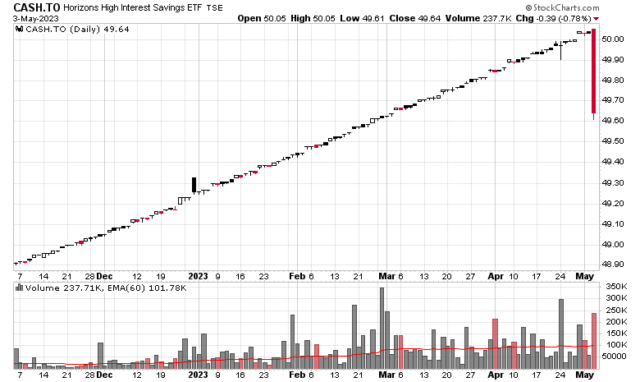On October 31, 2023, OSFI gave out a huge “trick or treat” to high-interest savings ETF owners (CASH, PSA, etc.) in the following technical bulletin.
There is a transitional period until January 31, 2024 whereby banks and HISA ETF operators will come to a separate rate structure that will most likely involve another haircut of gross yield – the media quoted one analyst from TD that claimed it would be about 50bps, but my suspicion it will be about half of that.
This will still make cash ETFs competitive, but not the no-brainer compared to alternatives, which include high-credit short-duration corporate bond funds.
In other words – there is no free lunch.
CASH.to right now yields a net 5.18%, while the nearest corporate bond alternative (looking at ZST.to as a reasonable proxy for this – they survived March 2020 fairly intact) is netting 5.47% for half a year duration risk. Government of Canada 6 month debt is at 5.11%. CBIL.to is an average 1.8 month duration government bond ETF that yields a net 4.92%. Another relatively innovative product is target date maturity ETFs (looking at RBC’s RQL.to), which has an average duration of 0.63 years and a 5.16% net yield and by all accounts looks inferior to ZST.
What other proxies for Canadian short-term investment-grade corporate debt are out there? Most of them have duration of 2-4 years which involves a significant interest rate component exposure. The other question is whether half a percentage point is adequate compensation for (albeit very low) credit risk.
The yield curve continues to remain heavily inverted – 1 year to 30 year is roughly a -146bps differential, while the more quoted 2-10yr spread is -80bps.
